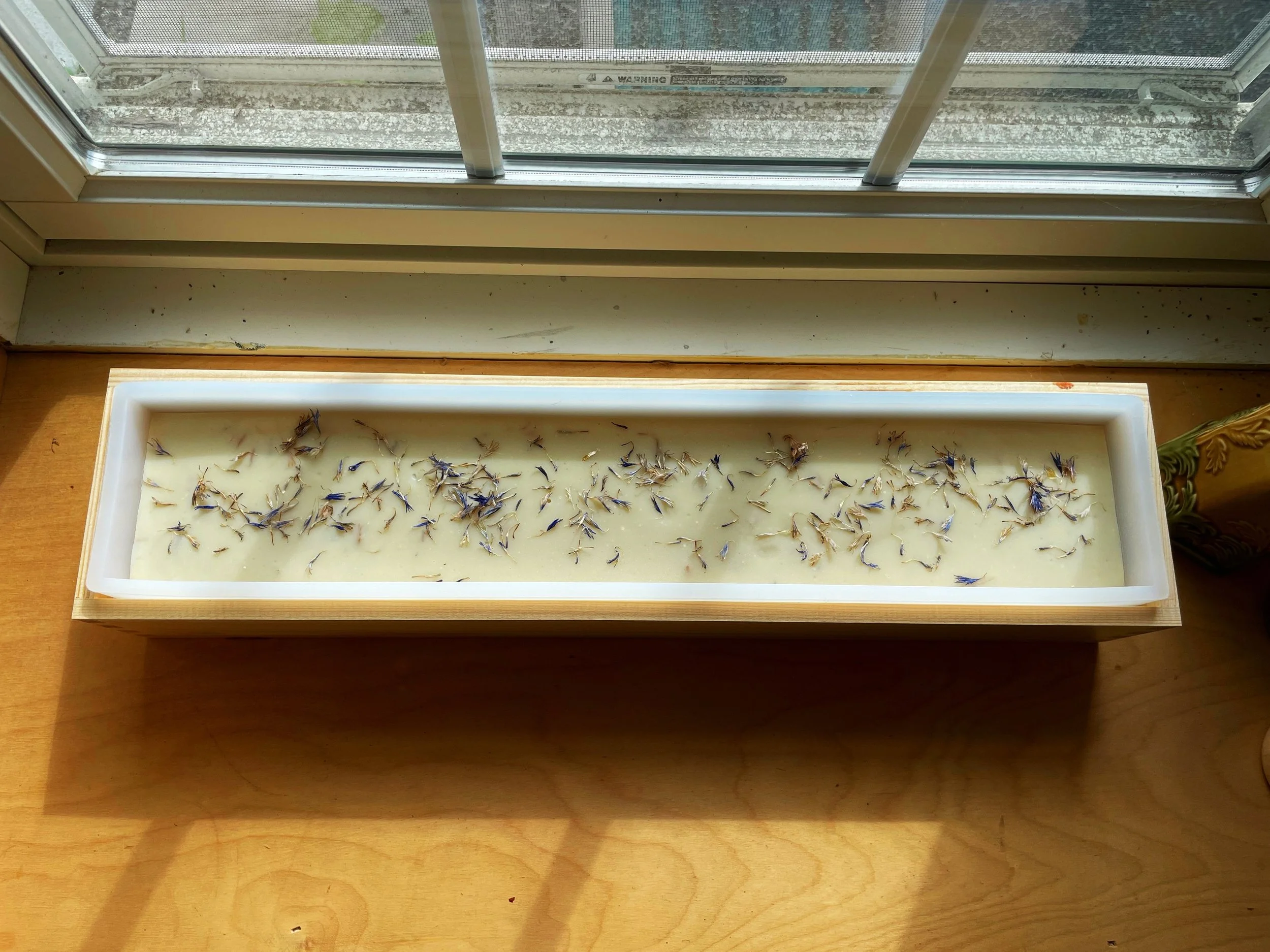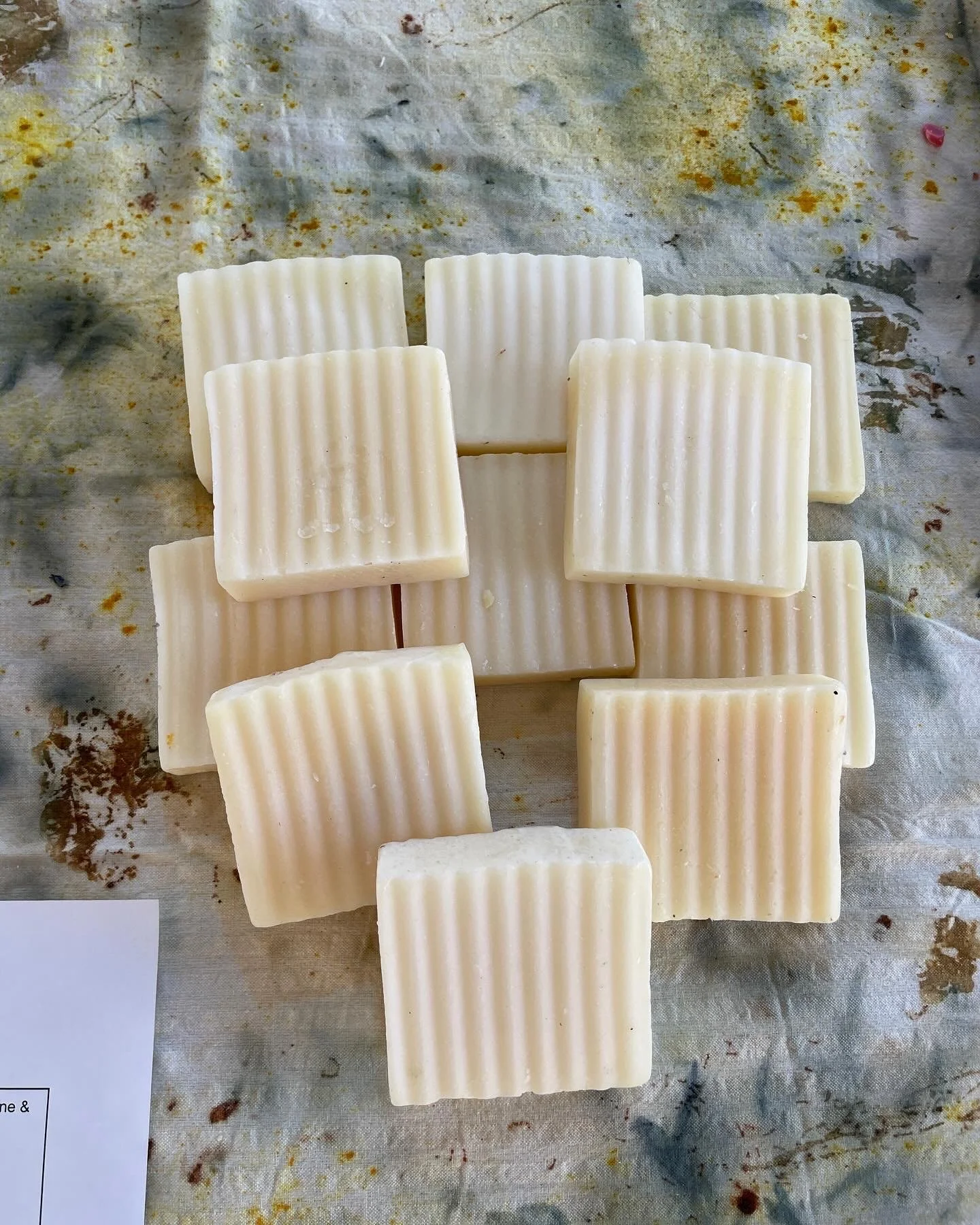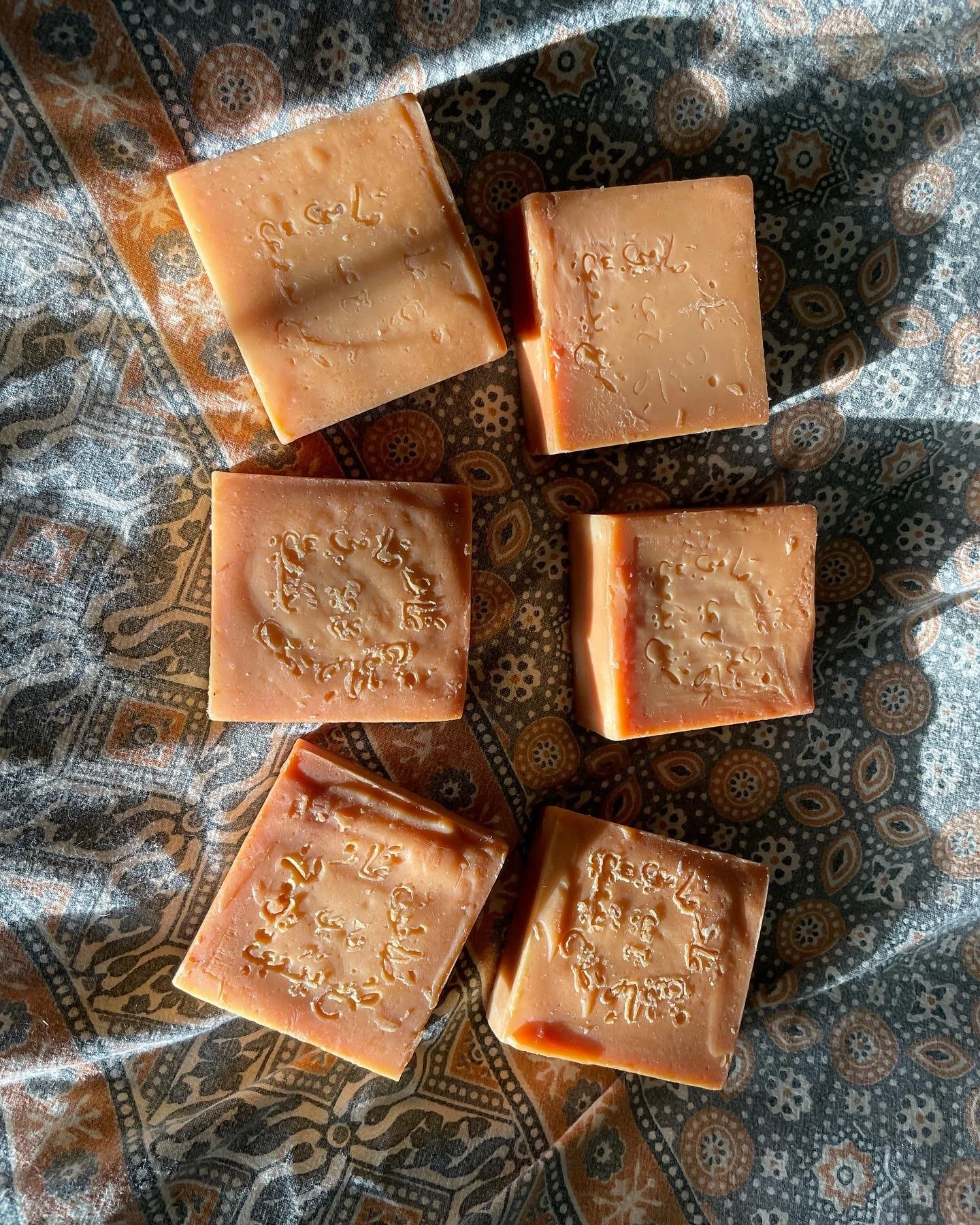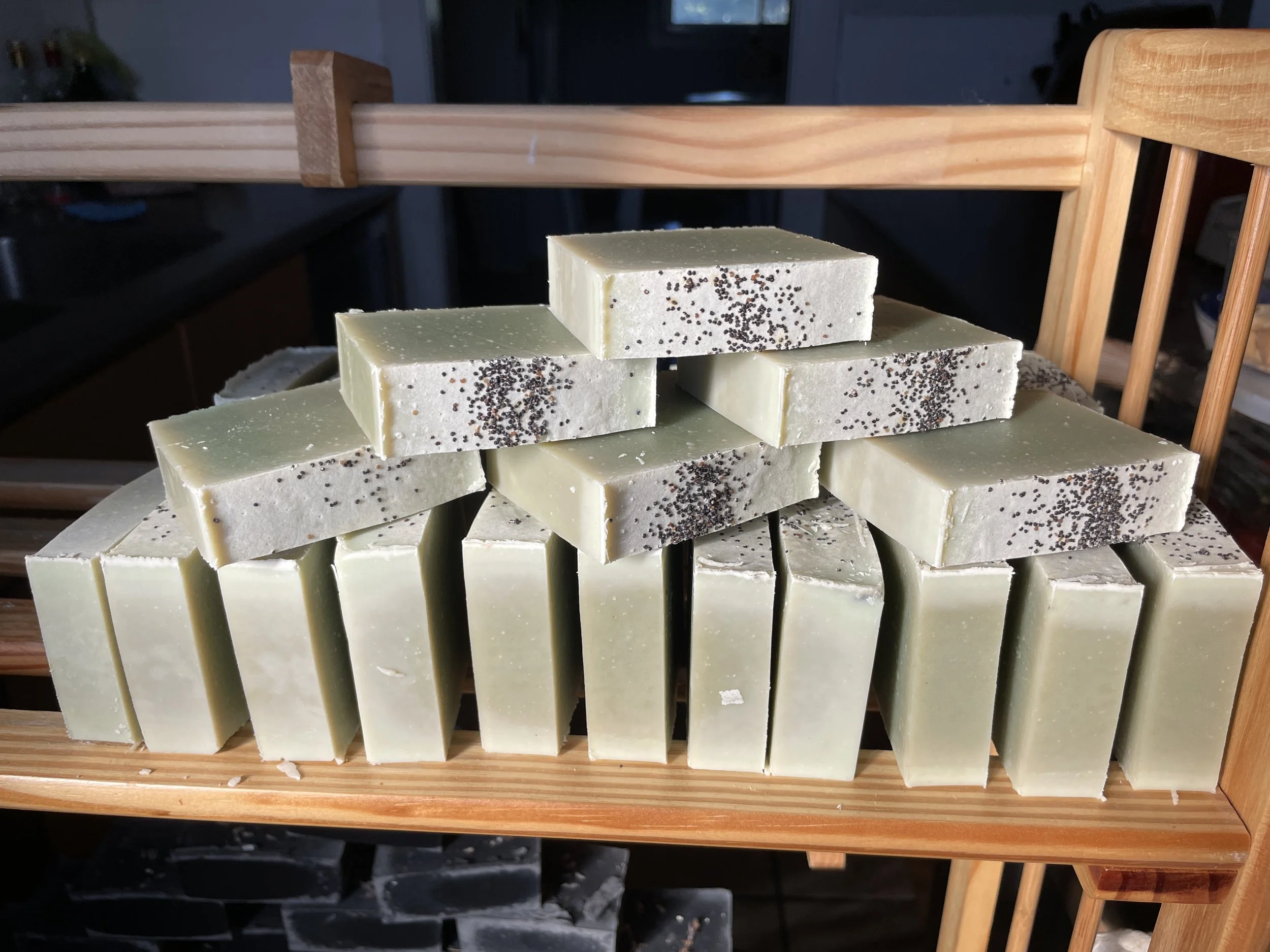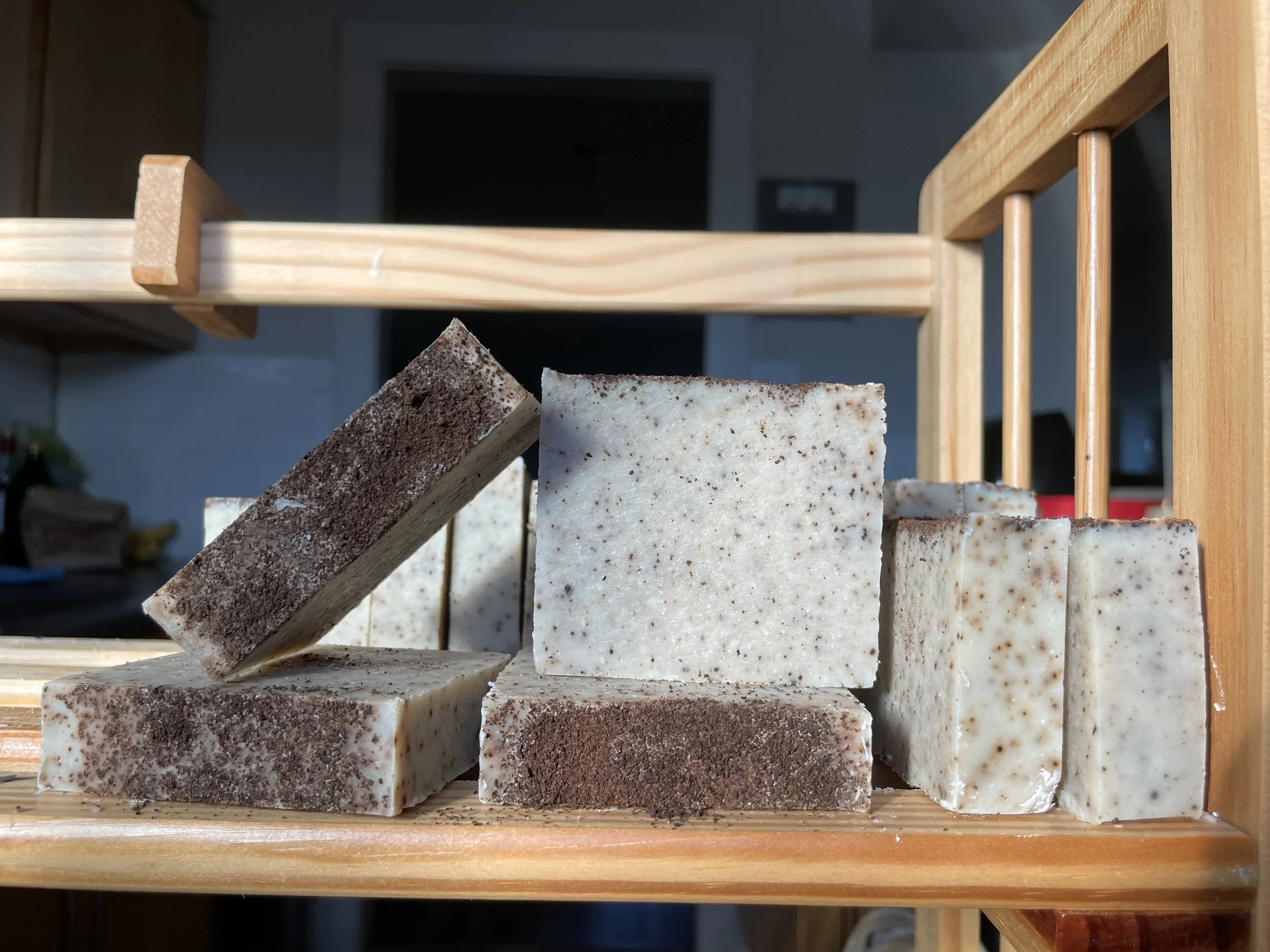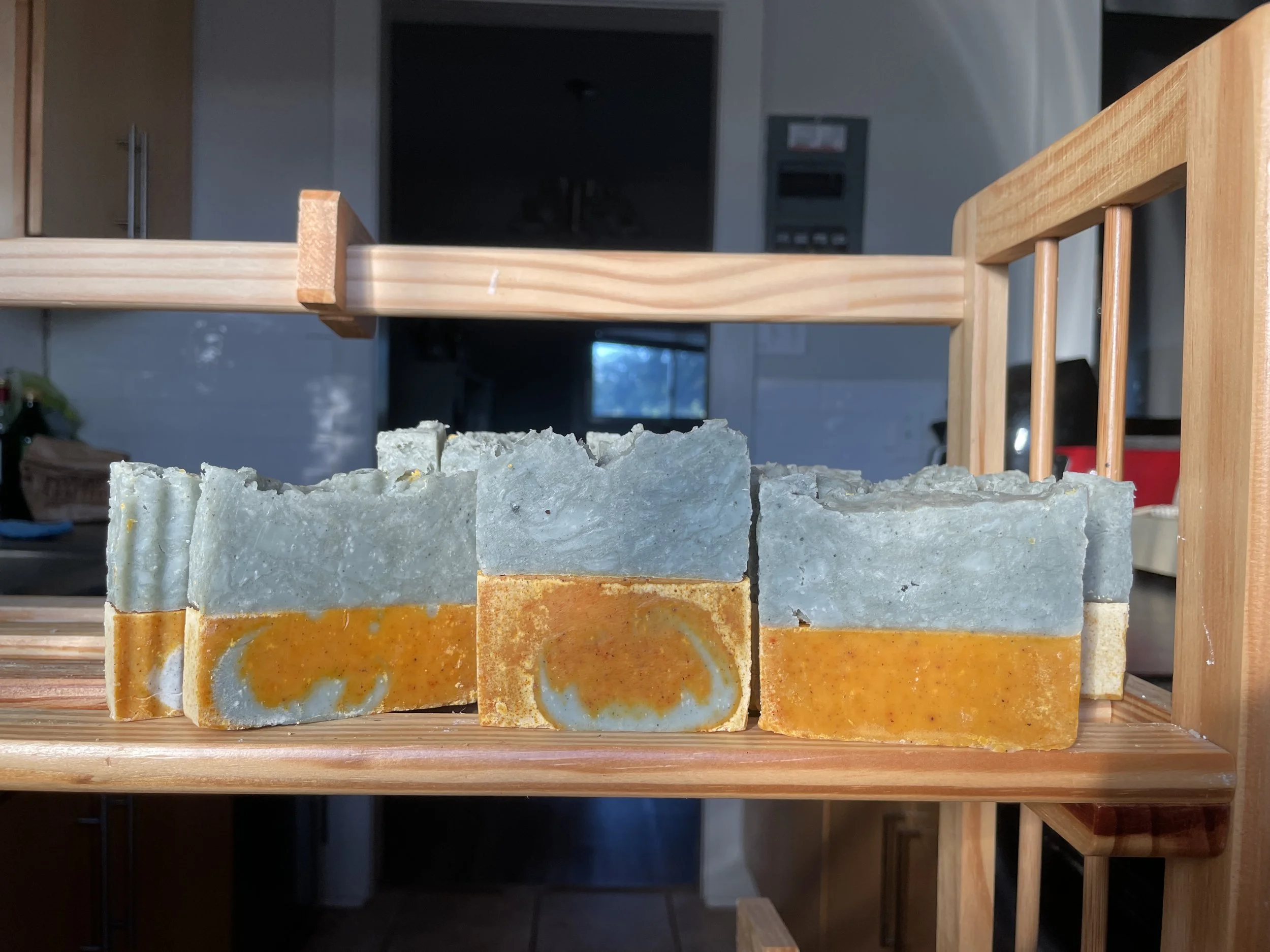All soaps are nice but some soaps may serve our needs better than others. If you’re wondering which soap is right for you, or just wanting to learn more about the nuances of different types of soaps, read on!
Goat’s Milk
You might think I am partial to goat’s milk soaps due to my origin story in soap making, but this is not the case! I formulate my goat’s milk soaps similarly to my plant based soaps, simply switching out the water/tea/juice with goat’s milk. Goat’s milk soaps are special and there many reasons why you might consider using them:
goat’s milk carries vitamins A, D, C, and E which are known to contain oxidative properties and aid in skin elasticity
goat’s milk is known to aid in skin conditions like acne, eczema, psoriasis, and rosacea
the sugar in goat’s milk increases lather
the higher fat percentage in goat’s milk makes for a more moisturizing soap
Tallow
Tallow is a saturated fat, making for a firmer bar of soap. The tallow soaps I create are comprised solely of tallow. I believe in using tallow in soap making for the following reasons:
studies show that tallow increases hydration and moisture in our skin
studies have also proven tallow to contain innate anti-microbial properties
Tallow is documented to aid in psoriasis, rosacea, dermatitis, and other inflammatory skin conditions
Tallow is rich in the following triglycerides: oleic acid, palmitic acid, stearic acid, and linoleic acid, which are known to be the main fatty acids of the epidermis
Tallow contains essential vitamins, A, D, K, E, and B12
Tallow is a byproduct of meat production, and ensuring that there is minimal waste is of interest to us all
Olive Oil Soaps/Laurel Soap / Saboon Ghar
Saboon is Arabic for soap and Saboon Ghar is Arabic for Laurel Soap, which is also commonly referred to as Aleppo Soap. Olive oil soaps are known for their viscous textures, and are the softest of any bar soap. Olive oil soaps need to cure for at least 6 months before use, and traditionally only contain olive oil (ie Saboon Nabusli, traditional Castile soap, Marseille soaps) or olive oil combined with laurel berry oil. It is common to see a range of percent of laurel berry oil content, anywhere from 8-30%, with higher laurel berry oil percentages contributing to a higher quality bar of laurel soap. The curing time as well as the use of laurel berry oil contribute to these soaps being more expensive than other bars with mixed oils. These bars are very gentle and moisturizing.
Plant Based Soaps
The plant based bars I make are typically a mix of olive oil, coconut, and grapeseed oil. Sometimes I throw in castor, avocado, or sunflower oil, as well, depending on the recipe. Mixed oil bars have a 4-6 week cure time, and can be made by either the cold or hot process method. Making mixed oil bars without animal byproducts is definitely newer in soap history, but that doesn’t mean they aren’t just as nice! I superfat at about 5% for most of these bars, leaving them to be moisturizing and cleansing. Some of the bars have aloe vera juice as a water replacement, some have teas, and my ferment soap has saurkraut brine! I do a lot of my creative work with these soaps, through color and essential oil experimentation.


